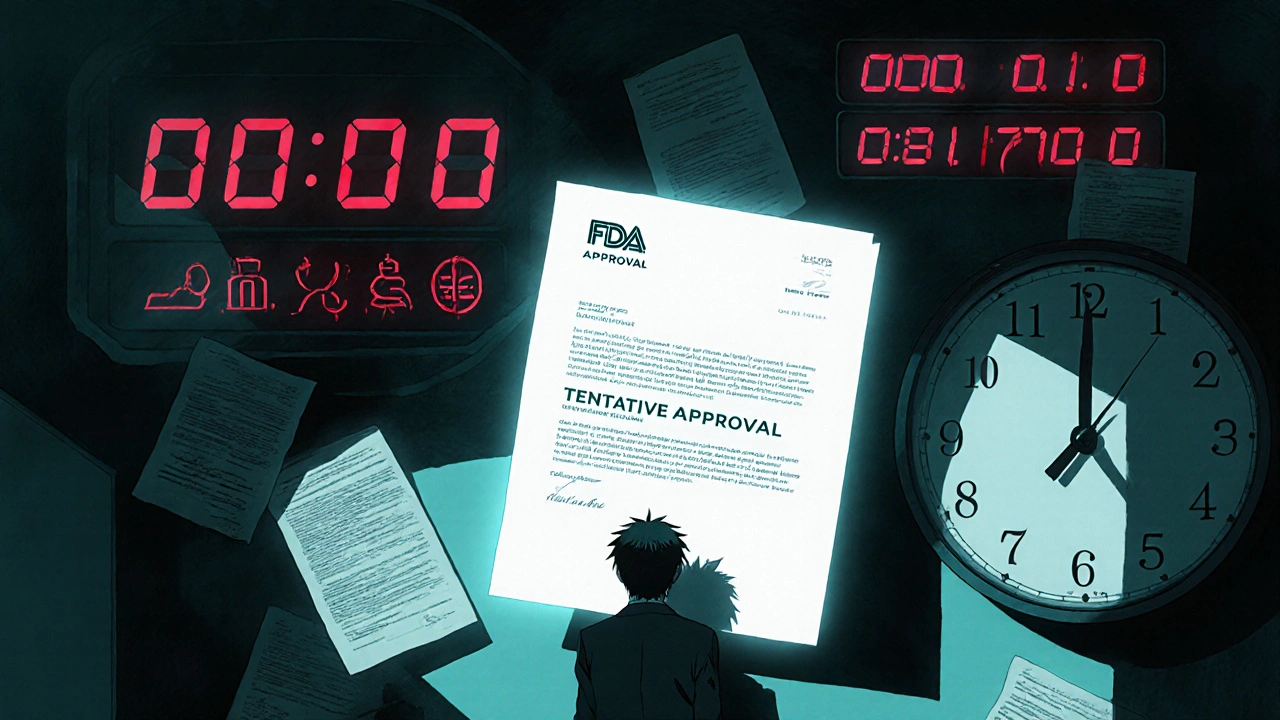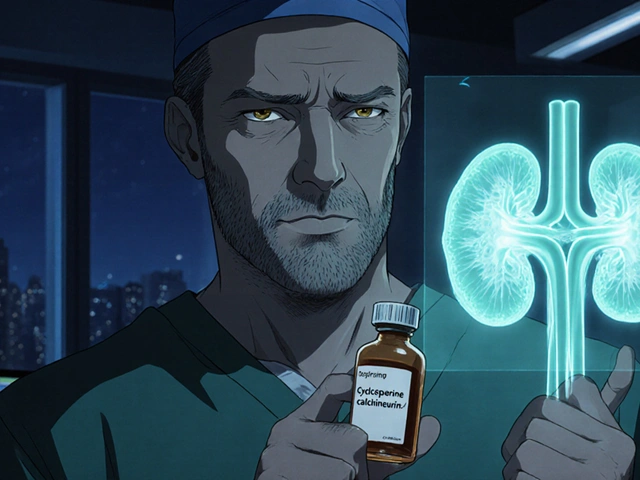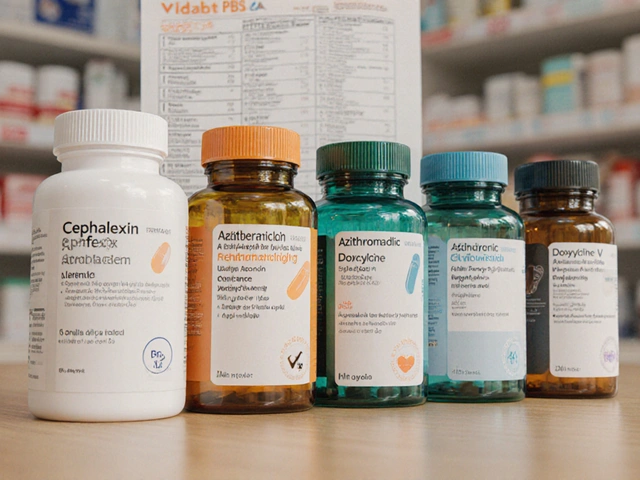
When a generic drug company gets a letter from the FDA saying their application is tentatively approved, it’s not a celebration-it’s the start of a long, high-stakes wait. You’ve cleared every scientific hurdle. Your chemistry, your manufacturing, your labeling? All perfect. But you can’t sell the drug. Not yet. Why? Because a patent is still in force. And now, you’re stuck in regulatory limbo, hoping the patent expires before your competitors do-or better yet, that you win a lawsuit that clears the path.
What Tentative Approval Really Means
Tentative approval isn’t a partial win. It’s not "almost approved." It’s the FDA’s official way of saying: "You’re ready. We’re ready. But the law says no." This status exists because of the Hatch-Waxman Act of 1984, the law that created the modern generic drug system in the U.S. It’s designed to balance innovation with access. Brand-name drug makers get patent protection and market exclusivity. Generic makers get a fast track-but only after those protections expire.When the FDA grants tentative approval, they’ve completed their full technical review. No more data requests. No more missing specs. The drug meets every standard for safety and effectiveness. But final approval? That’s locked behind a patent or exclusivity period. Until that barrier falls, the generic can’t be sold in the U.S. market.
This isn’t just paperwork. It’s a strategic move. Companies with tentative approval are queued up, ready to launch the moment the patent expires. For first-filers who challenge a patent with a Paragraph IV certification, this can mean a 180-day exclusivity window-where they’re the only generic on the market. That’s worth hundreds of millions in revenue.
The Litigation Game: Patents vs. Parachutes
Here’s where things get messy. Many generic companies don’t just wait. They fight. They file a Paragraph IV certification, claiming the brand’s patent is invalid, unenforceable, or won’t be infringed. That triggers a lawsuit. The brand gets 45 days to respond. If they sue, the FDA can’t give final approval for up to 30 months-unless the court rules in the generic company’s favor sooner.This 30-month clock is the biggest delay in the system. But here’s the twist: companies with tentative approval don’t sit idle. They track every legal filing, every court date, every possible settlement. Some lawsuits end in deals-where the brand pays the generic to delay entry. Others go to trial. And sometimes, the patent gets thrown out entirely.
Take Lupin’s generic version of Cialis. They had tentative approval. The patent expired. They submitted their final approval request. Within 24 hours, the FDA cleared it. They launched. Captured 42% of the market in the first month. That’s the dream. But it only works if you’ve done everything right.
The Hidden Trap: You’re Not Done After Tentative Approval
Too many companies think tentative approval is the finish line. It’s not. It’s the starting line for a whole new race.Let’s say your patent expires on June 1. You think: "I’ll submit my final approval request on May 30." Bad move. The FDA requires minor amendments to be submitted at least three months before the earliest lawful approval date. That means you need to file by March 1. If you miss that window, you lose your spot in line. Even if the patent expired, you’re stuck waiting for the FDA to review your paperwork-another 30 to 90 days.
And it’s not just timing. Changes to your manufacturing site? Your label? Your active ingredient source? Even small tweaks need to be submitted as amendments. If you don’t, the FDA can reject your final approval request. Aurobindo Pharma learned this the hard way in 2021. They changed their manufacturing facility but didn’t document it properly. Result? A four-month delay. $150 million in lost revenue.
Then there’s exclusivity. Pediatric exclusivity. Orphan drug exclusivity. These can extend the patent clock by six months or more. Mylan’s generic EpiPen got tentative approval-but missed a pediatric exclusivity extension. They waited 18 months. Then got delayed another six months. All because no one checked the fine print.

Who’s Doing This Right?
The top 10 generic manufacturers in the U.S. each have 15 to 25 products in tentative approval status at any time. They don’t guess. They track. They use software that combines patent expiration dates, exclusivity periods, court dates, and FDA submission deadlines into one dashboard. Legal teams and regulatory teams talk every week. They don’t wait for the patent to expire. They prepare for it.Teva’s team for Januvia’s generic knew the exact date the patent would fall. They submitted their final approval request exactly 90 days before. No delays. No surprises. They launched on day one.
Smaller companies? They struggle. Many don’t have the staff or systems. They rely on consultants. They miss deadlines. The FDA says 15% of tentatively approved applications get delayed because of sloppy final approval submissions. That’s avoidable. It’s not hard. It just takes discipline.
The Bigger Picture: Why This Matters
The U.S. generic drug market is worth $75 billion a year. Eighty-five percent of those drugs enter the market through tentative approval. Without this system, patients would pay more for longer. Insurance companies would spend more. Medicare would be under more strain.But it’s fragile. The FDA is trying to fix it. In May 2023, they promised to cut final approval review times from 90 days down to 30 days for minor amendments. That’s progress. But patent portfolios are getting more complex. Biologics, complex generics, layered exclusivity-these are making the system harder to navigate.
And there’s political pressure. A bill called the Protecting Drug Patents Act, introduced in March 2023, could extend patent terms even further. If it passes, tentative approval could mean waiting years longer than expected.

What You Need to Do If You’re in This Game
If you’re a generic manufacturer, here’s what you can’t afford to skip:- Build a patent tracker that includes every patent, every exclusivity, every court date. Update it weekly.
- Assign a legal and regulatory team to work together-not in silos. They need to talk daily.
- Submit final approval requests at least three months before the earliest lawful approval date. Don’t wait.
- If you make any change to your product, even a label tweak, submit it as an amendment. Document everything.
- Know your exclusivity extensions. Pediatric, orphan, and manufacturing exclusivity can hide in plain sight.
And if you’re a patient or a payer? Understand this: the delay between tentative approval and market entry isn’t about the FDA being slow. It’s about the law protecting patents. When that wall comes down, prices drop fast. That’s the whole point.
What’s Next?
The system works-but only if you treat it like a precision instrument. Tentative approval isn’t a reward. It’s a responsibility. The FDA gives you the green light on science. But the legal clock? That’s yours to manage.Companies that win are the ones who don’t wait for the patent to expire. They plan for it. They prepare for it. And when the moment comes, they’re ready to move-fast.
What is tentative approval from the FDA?
Tentative approval is a regulatory status granted by the FDA to generic drug applications (ANDAs) that meet all scientific and technical requirements for approval but cannot be fully approved due to unexpired patents or exclusivity periods on the brand-name drug. It means the FDA has reviewed and accepted your application, but you cannot legally sell the drug until those legal barriers are removed.
Can a company sell a drug with tentative approval?
No. Tentative approval does not allow marketing or sale of the drug in the U.S. Final approval is required before any commercial distribution. The drug remains in regulatory limbo until patent or exclusivity protections expire and the FDA grants final approval.
How long does it take to get from tentative approval to market entry?
There’s no fixed timeline. It depends entirely on when the patent or exclusivity expires. Some companies wait months; others wait years. The key is preparation: submitting final approval requests at least three months before the earliest lawful approval date. Without that, even after patent expiry, delays of 30-90 days are common.
What is a Paragraph IV certification?
A Paragraph IV certification is a legal statement filed with an ANDA that challenges the validity or enforceability of a patent protecting the brand-name drug. Filing this triggers a 45-day window for the brand to sue. If they do, the FDA can delay final approval for up to 30 months unless the court rules in the generic company’s favor. This is the main legal tool used to accelerate generic entry.
Why do some companies delay market entry even after winning a patent lawsuit?
Because winning the lawsuit doesn’t automatically grant final approval. The company must still submit a request to the FDA for final approval, and the FDA needs time to review it. If the company didn’t submit the request in advance or made changes to the application without proper documentation, delays of weeks or months can occur. Timing and paperwork matter as much as the court decision.
What happens if a company misses the three-month deadline to submit a final approval request?
The FDA will not approve the application retroactively. Even if the patent has expired, the company must wait for the FDA to process their late submission, which can take 60-90 days. This means losing valuable market share to competitors who filed on time. The FDA does not make exceptions for missed deadlines.
Are there any risks to pursuing tentative approval?
Yes. The biggest risk is misjudging patent expiration dates or overlooking exclusivity extensions. A single oversight can delay launch by months or years. Also, if a company files a Paragraph IV certification and loses the lawsuit, they lose their chance at 180-day exclusivity and may face legal costs without any market reward. The process requires legal, regulatory, and financial expertise.
How common is tentative approval in the U.S. generic drug market?
It’s extremely common. About 85% of all generic drugs entering the U.S. market do so through the tentative approval pathway when patent barriers exist. The FDA issues around 1,000 tentative approvals per year, and 92% of the top 50 generic manufacturers actively pursue this route for products with patent protections.




